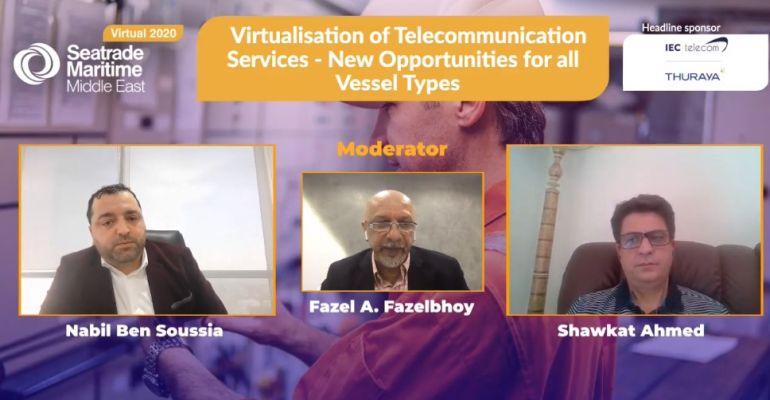The global maritime industry is on the verge of investing over $38.4bn in digitalisation by 2050, and the application of satellite communications can on average help to optimise operational costs by 30%, according to Nabil Ben Soussia, ceo Asia-Middle East & CIS of IEC Telecom Group.
“Today, everything is virtual, without which you are actually at risk of not being able to carry out your natural job – this is the new normal. And Covid-19 has only made digitalisation and virtualisation more important,” Soussia said.
With digitalisation and virtualisation seen as a ‘no turning back’ trend, IEC Telecom and satellite operator Thuraya have joined hands to offer Orion Edge V, which offers a VSAT-like experience over compact hardware for smaller vessels.
Soussia said it had been technically harder for smaller vessels to install a VSAT antenna due to size constraints and high costs, but the Orion Edge V has offered an affordable and agile solution suitable for small ships such as OSVs.
“This is an important step forward for small to mid-sized offshore vessels to apply digitalisation and virtualisation, so as to maintain their competitiveness in the market and manage their jobs regardless of oil prices being at $20 or $80, as well as to close the gap between large and small vessels,” he said.
Shawkat Ahmed, chief commercial officer of Thuraya Telecommunications, said: “We have seen trends in terms of ship automation, dependence on systems, provision and integration of data, and so forth. These are relatively new areas where we have to work closely with our partners to offer the highest reliability and achieve optimal throughput for different needs.
“In the maritime and offshore sectors, users require a lot applications like artificial intelligence, robotics, Big Data, and specific requirements such as pipeline management, hydrography, sensors – all of these also mean a higher level of cyber security is required,” he added.
The immediate plan ahead for Thuraya is the launch of its next-generation T4-NGS spacecraft for stronger performance and higher flexibility. The commercial launch is planned for the first quarter of 2024.
Ahmed said the T4-NGS is the “best in class MSS L-band services” with higher data rates, end-to-end solutions, and extended coverage in more than 10 countries and areas including the Cape of Good Hope maritime lane, the Atlantic and Indian Oceans, and Northern Europe.
“We are making investments right now and the T4 next-generation investment is in the region of half a billion. The maritime industry is a key focus for us and we leave no stone unturned to make sure our solutions are flexible and can be customised for end users anywhere in the world,” he said.
Copyright © 2024. All rights reserved. Seatrade, a trading name of Informa Markets (UK) Limited.
Add Seatrade Maritime News to your Google News feed.  |


